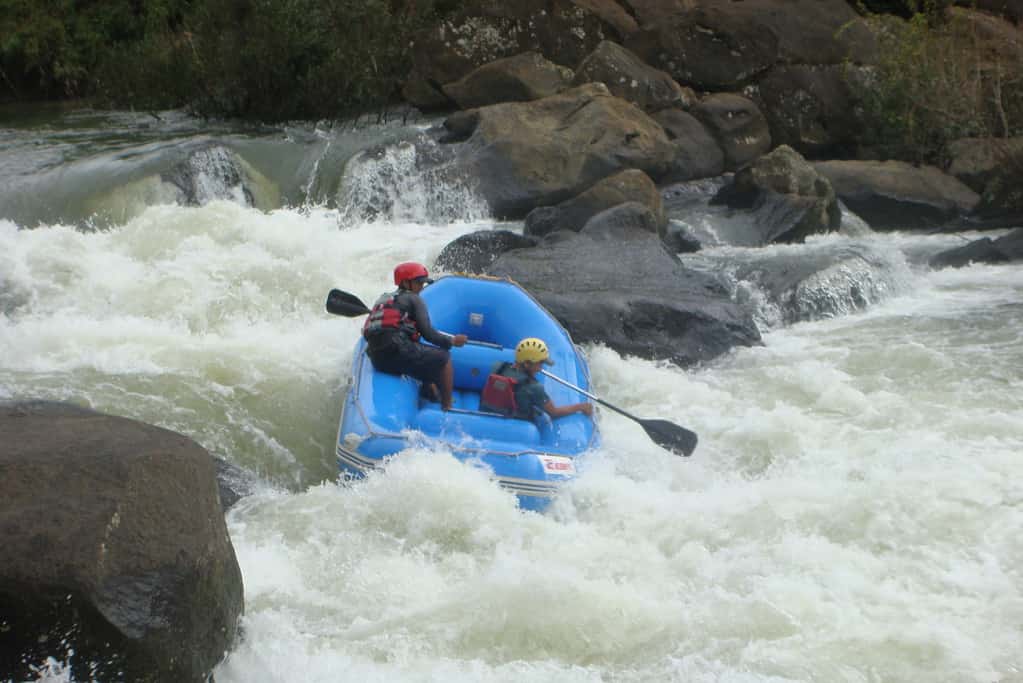
If you enjoy water and adrenaline rushes, you’ll want to try whitewater rafting at least once.
©Philip Larson from McLean, VA, US/ CC BY-SA 2.0 – License
Almost every state has rivers that offer rafting, and some even have man-made parks. Usually, states like Colorado, Arizona, Oregon, Tennessee, and California are brought up to be the best states to visit for rafting.
But what about individual locations? The list below offers the best rivers, and places in the river, worth trying out. Some have family-friendly challenges and amazing scenery you won’t get anywhere else, while others have rapids to keep your attention on the water the entire time.
1. Colorado River, Arizona

Going through the Grand Canyon in a raft is an experience you don’t want to miss.
©Amanda Mohler/Shutterstock.com
If you’re looking for thrills, you may want to skip over the Colorado River in Arizona. It does have some pretty impressive rapids, going all the way up to a Class VI. However, most of the tours are pretty tame, making it an adventure everyone can partake in.
What really makes this whitewater rafting ride stand out is the location, more than the challenge. The river takes you right through the Grand Canyon. It’s a once-in-a-lifetime experience. It’s also often highly in demand, so it’s a good idea to plan this adventure well in advance.
2. Snake River, Wyoming
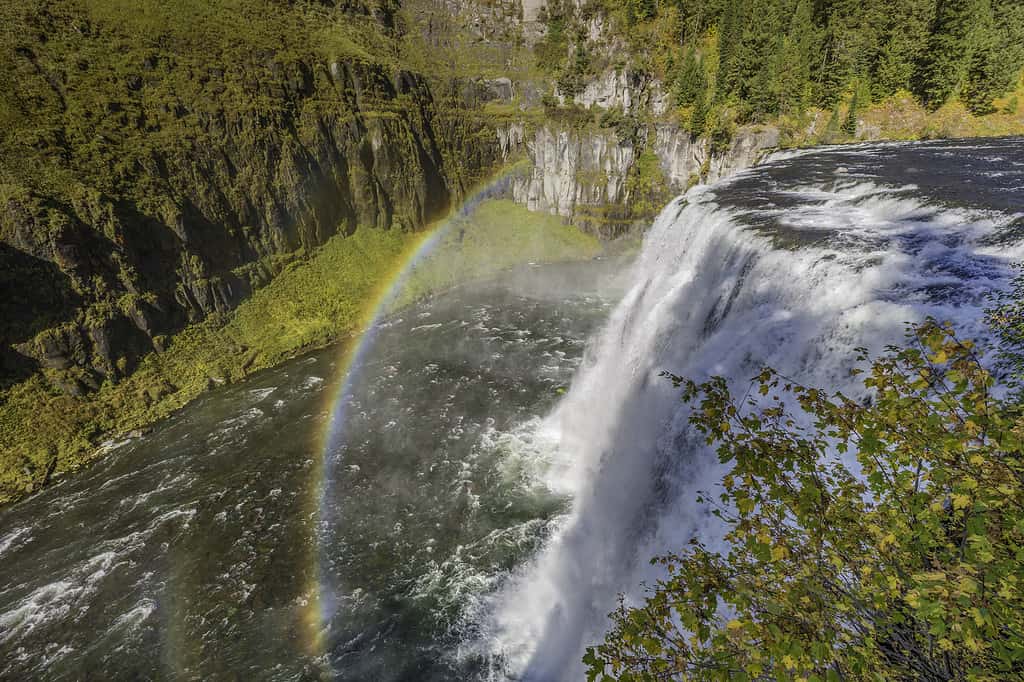
While this is on Snake River, don’t worry, you won’t be falling off of any waterfalls.
©Gerald Corsi/iStock via Getty Images
The whitewater rafting trips in Snake River in Wyoming are classified as a mix of Class II and Class III. There are times of the year when the water can get up to a Class IV, though. It’s always a good idea to check before you go on your adventure to make sure it’s not too difficult for you.
The eight-mile trip will take you through Grand Teton National Park. There’s usually a lot of wildlife to see in the area as well, such as bald eagles, deer, and fish. If you want to spend more time on the water, there’s a 16-mile option as well, which takes 8 to 10 hours to complete.
3. Ocoee River, Tennessee
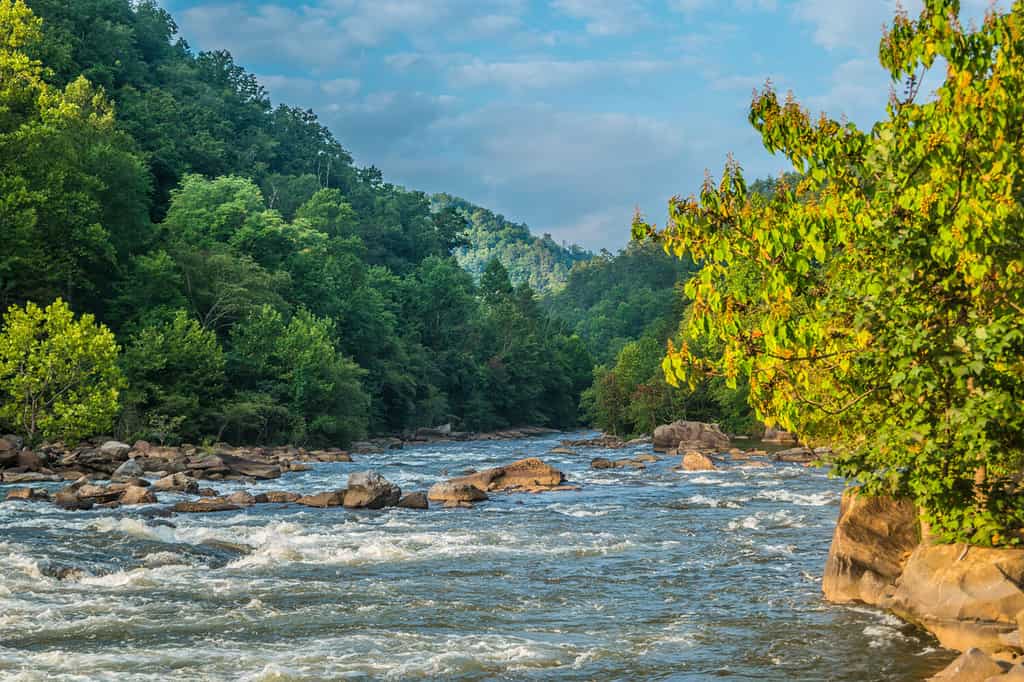
Ocoee River features a lot of rocks and rapids to keep you on your toes.
©Sandra Burm/Shutterstock.com
Interestingly, if you take the time to look up other lists of the best whitewater rafting spots in the US, you won’t see many that have the Ocoee on there. The reason this is interesting is because it’s the second most visited white water destination in the United States.
It falls a little behind the Arkansas River, according to America Outdoors. There are Class III and IV rapids to contend with, but a good guide can get you through them without a problem.
4. Arkansas River, Colorado
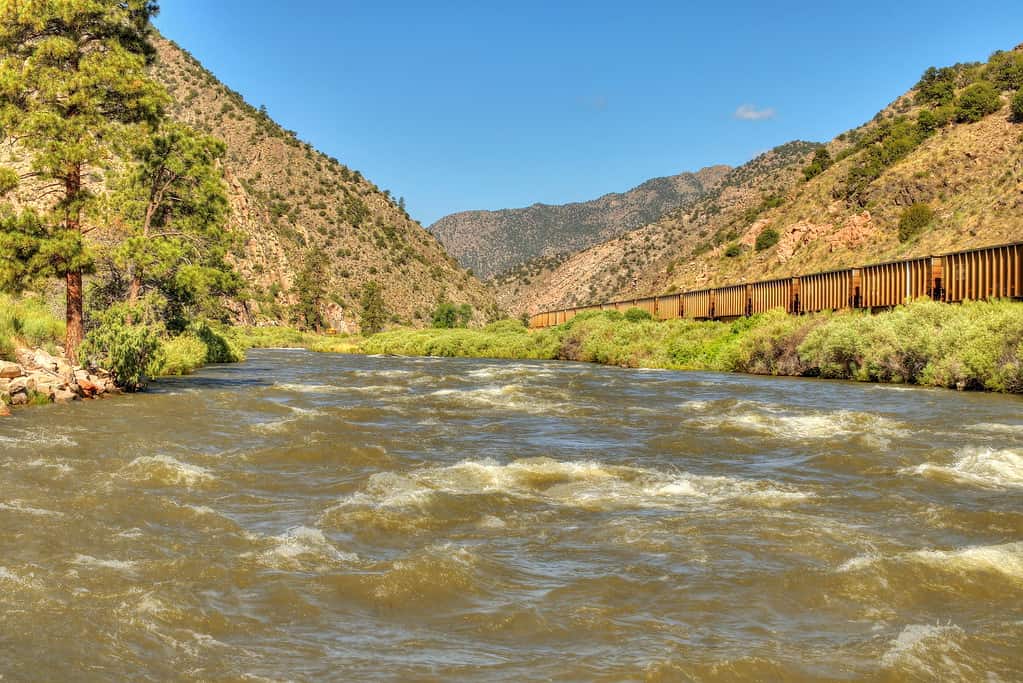
The Arkansas River has all sorts of scenery to catch your eye while you’re going down the river.
©Hundley_Photography/ via Getty Images
The best part of the Arkansas River to ride down when whitewater rafting is in Colorado. There are several states that the river goes through that offer rafting guides, but the area in Colorado is widely considered the best.
In Colorado, you have the option to go through the Royal Gorge. It’s got some technical areas where you’ll really need to focus, but for a good portion, you’re able to enjoy the scenery, including the Royal Gorge Bridge as you go under.
5. Rogue River, Oregon
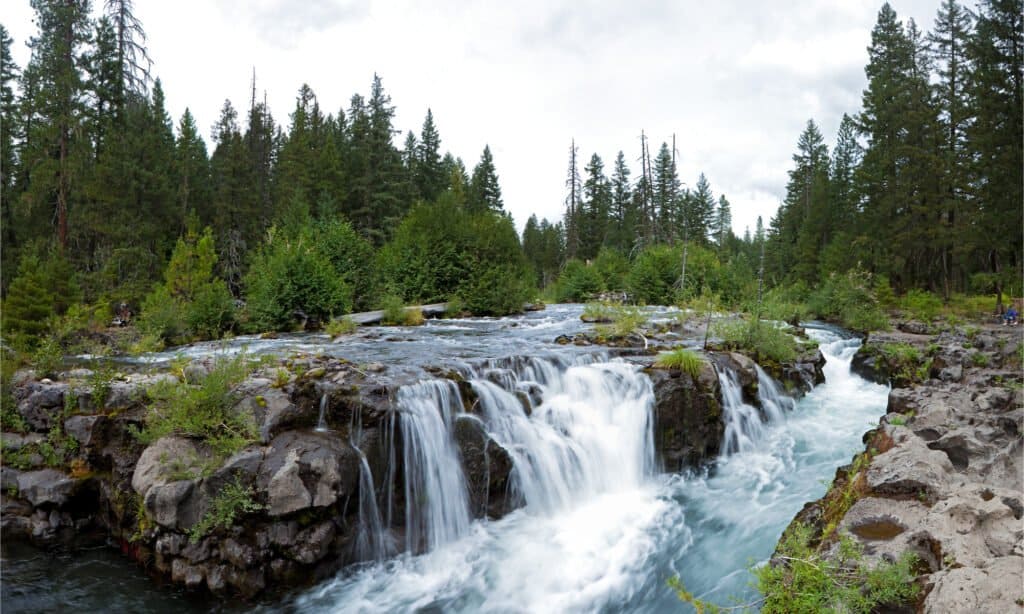
There are several options and areas of river you can raft down in Rogue River, Oregon.
©LHBLLC/Shutterstock.com
Part of the popularity of this river could be due to its limited availability. The Lower Rogue only allows 120 people a day. The other rafting options aren’t as limited, however, and there are several rafting companies that also offer multi-day trips if you want to spend three or four days out on the water.
Of course, if you want to bring your kid, or just dip your toes into the realm of whitewater rafting, then you can take some of the shorter day trips. There are some easier options, and some trips featuring several Class IV rapids.
6. Pigeon River, Tennessee

Water rushes through Pigeon River, creating the perfect rapids for whitewater rafting.
©Kelly vanDellen/Shutterstock.com
Pigeon River is another popular river in Tennessee hardly ever mentioned when it comes to whitewater rafting lists. It’s an incredibly fun one that won’t bore you with long stretches of calm water.
In the six and a half miles that make up the run, there are over 70 rapids, many of them ranging closer to Class III and Class IV. Despite that, it’s still easy enough that inexperienced paddlers will have a lot of fun.
7. Cossatot River, Arkansas
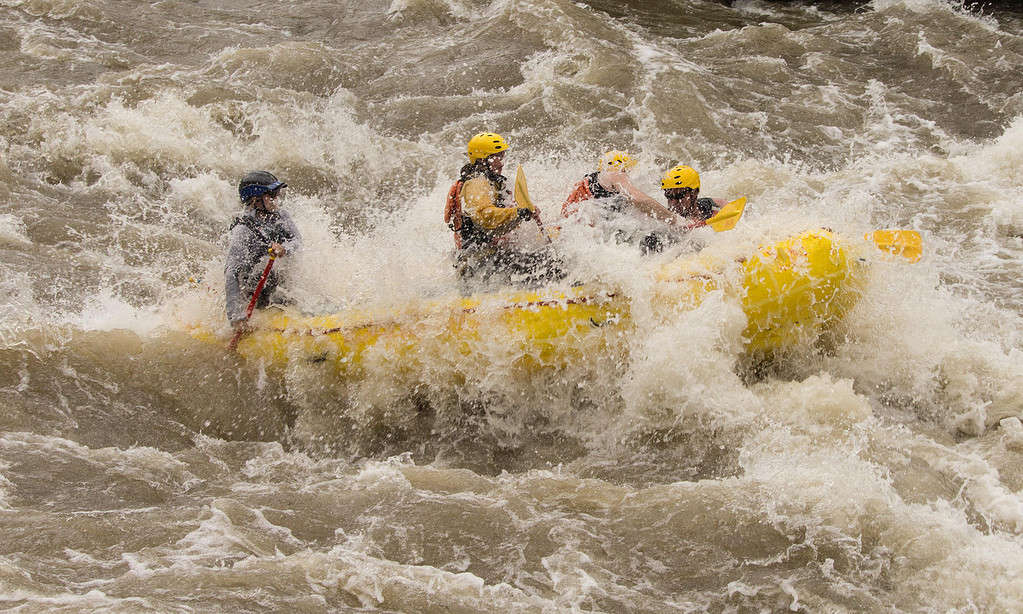
Whitewater rafting can be pretty rough at Cossatot in Arkansas.
©Rich Flubacker/Shutterstock.com
Located inside a state park, the Cossatot River in Arkansas is not an adventure for beginners. Whether you are rafting or kayaking on your own, the park suggests that only experienced come and visit.
They don’t even offer rental equipment for water activities. If you want to come and visit and try out the rapids, you’ll have to come prepared. If you come when the water is high, you can even try out the Class IV rapid that makes up Cossatot Falls.
8. New River Gorge, West Virginia

The New River passes by Prince West Virginia near the New River Gorge National Park and Preserve during the Autumn leaf color change.
©Different_Brian/ via Getty Images
New River Gorge offers a couple of whitewater rafting options, including the lower and upper sections, overnights, and multi-day trips. The upper section is more calm than the lower section.
In fact, it’s so calm that you can rent an inflatable kayak to ride down the river instead of getting into a boat with a big group. Each raft holds one child and one adult.
9. Nantahala River, North Carolina
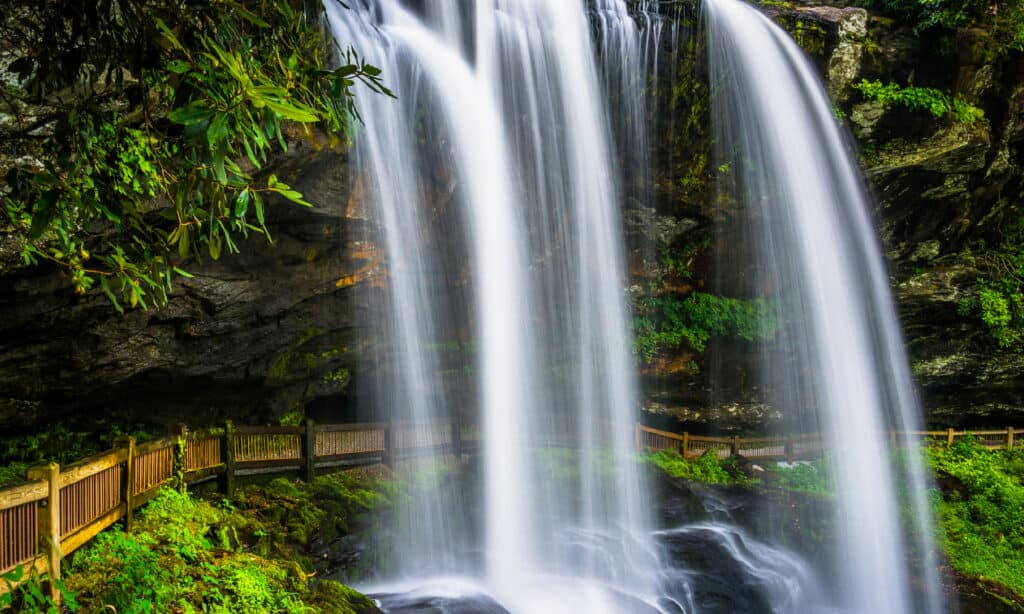
Nantahala River isn’t only for whitewater rafting. There are a lot of other sites and activities to enjoy nearby as well.
©iStock.com/Jon Bilous
Nantahala is a river packed with adventure for whitewater rafters. It offers over 20 named rapids, amongst several dozen more unnamed rapids. Though there are plenty of moments that will keep your heart racing, the course isn’t dangerous. It’s the perfect trip to get your children involved in your favorite sport.
The river is so calm and easily navigable that you can get self-guided tours. There are still plenty of options, however, if you do still want a guide to help you through the tougher rapids. Either way, you’ll have the time of your life and a fun day on the water.
10. Flathead River, Montana

Thanks to the dam and water from Glacier National Park, the Flathead River offers some interesting rapids to navigate.
©Mihai N/Shutterstock.com
If you want to experience the great wilderness of Montana without having to hike for miles through forests, then whitewater rafting offers a way to do just that. By rafting through Flathead River on the edge of Glacier National Park, you get a chance to see some of the local wildlife around you.
If you want to focus more on the scenery than the rafting, Some companies offer scenic, calm-water floats. Your guide will take you through the water, maybe give you some information about the area, and point out any wildlife they see, including wolverines, bighorn sheep, mule deer, and even the occasional wolf.
11. Black Canyon National Water Trail, Nevada
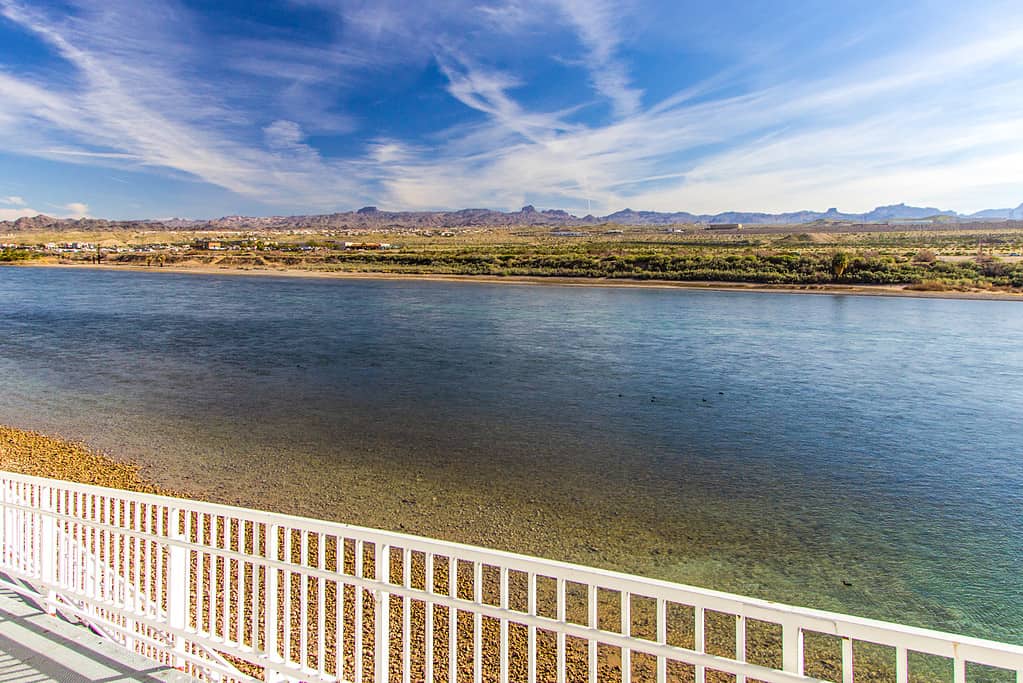
The Colorado River in Nevada has some slow spots, but it has some adventure as well.
©ehrlif/iStock via Getty Images
The Black Canyon Water Trail is a part of the Lower Colorado River. The water flows out of the Hoover Dam. It’s not one widely talked about because the Grand Canyon trip on the Colorado River is often much more talked about. That doesn’t mean it’s not worth visiting.
For one, it’s easier to visit. Sometimes, the Grand Canyon whitewater rafting can take years to get into as you have to get the right permits and transports. That’s not the case with this trip. There are also places worth exploring in the area, including canyons, hot springs, waterfalls, and beautiful scenery.
12. Clear Creek, Colorado

There are rafting trips for all skill levels to enjoy on Clear Creek in Colorado.
©joshschutz/iStock via Getty Images
Clear Creek has a lot of variety. Depending on your experience level, you can choose a beginner course, intermediate trip, or advanced trip. Depending on your choice, you can find anywhere between Class II and Class V rapids. There are also evening trips that cater to both beginner and intermediate groups that allow you to see the sunset from your raft.
The advanced course doesn’t mess around either. If you’re looking for a challenge, the back-to-back class IV or higher rapids followed by a 1,300-foot drop, this 16-mile trip will wear out even the most experienced of rafters.
13. Rio Grande, New Mexico
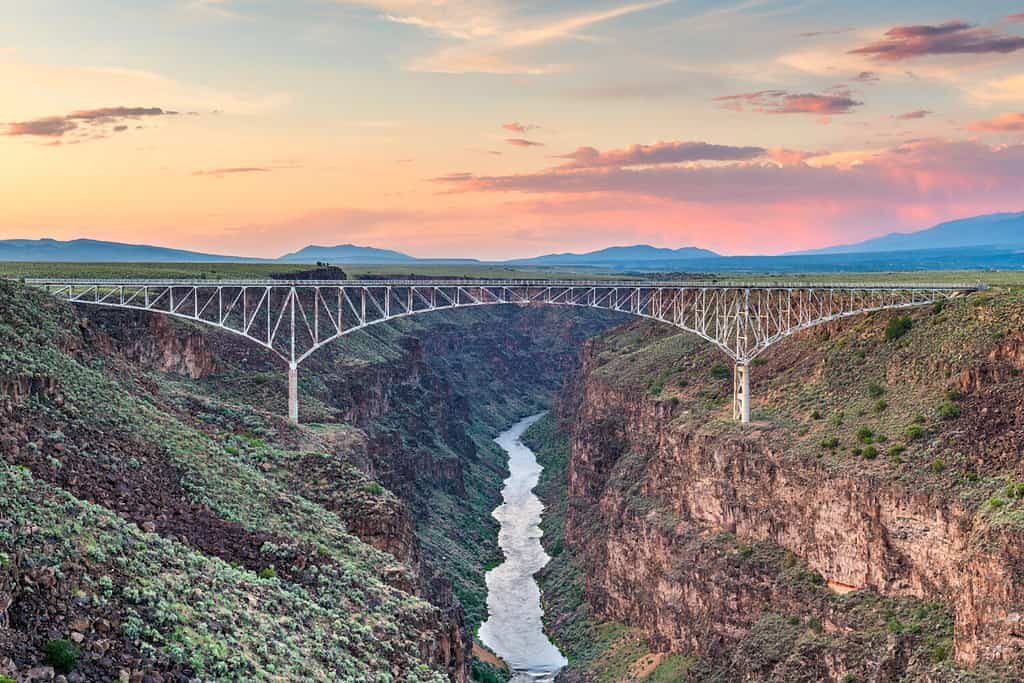
Rio Grande Gorge is one of the amazing views you’ll get to see while whitewater rafting down the Rio Grande in New Mexico.
©Sean Pavone/Shutterstock.com
There are two areas to choose from when it comes to the Rio Grande in New Mexico. Try your hand at the Lower Taos Box, which offers Class IV rapids as you’re going into the heart of the canyon. Or, you can go with the Racecourse section that’s a little more downstream and offers Class III rapids.
There are a total of 24 miles you can choose from. You can do all of it, for a rather long trip that would probably take a full day, or more likely two. Or you can go with guides down one section or the other. Whichever option you go with, keep your eyes out for waterfalls and petroglyphs that show off the history of the area.
14. Nolichucky River, Tennessee

With this view of the Nolichucky, you may think it’s a peaceful river, but it’s got plenty of rapids.
©Merma1d/iStock via Getty Images
The Nolichucky starts in North Carolina, in the Roan Mountain, and Mount Mitchell in Mississippi. Then, it comes together and meets in the Nolichucky River Gorge and becomes the Nolichucky River. This is one of the deepest gorges in the Appalachian Mountains.
When you go whitewater rafting in the gorge, you get to travel across eight and a half miles of the water. Most of the rapids are Class III and IV. It’s said to be one of the biggest and most technical whitewater runs in the South of the United States.
15. Moose River, New York
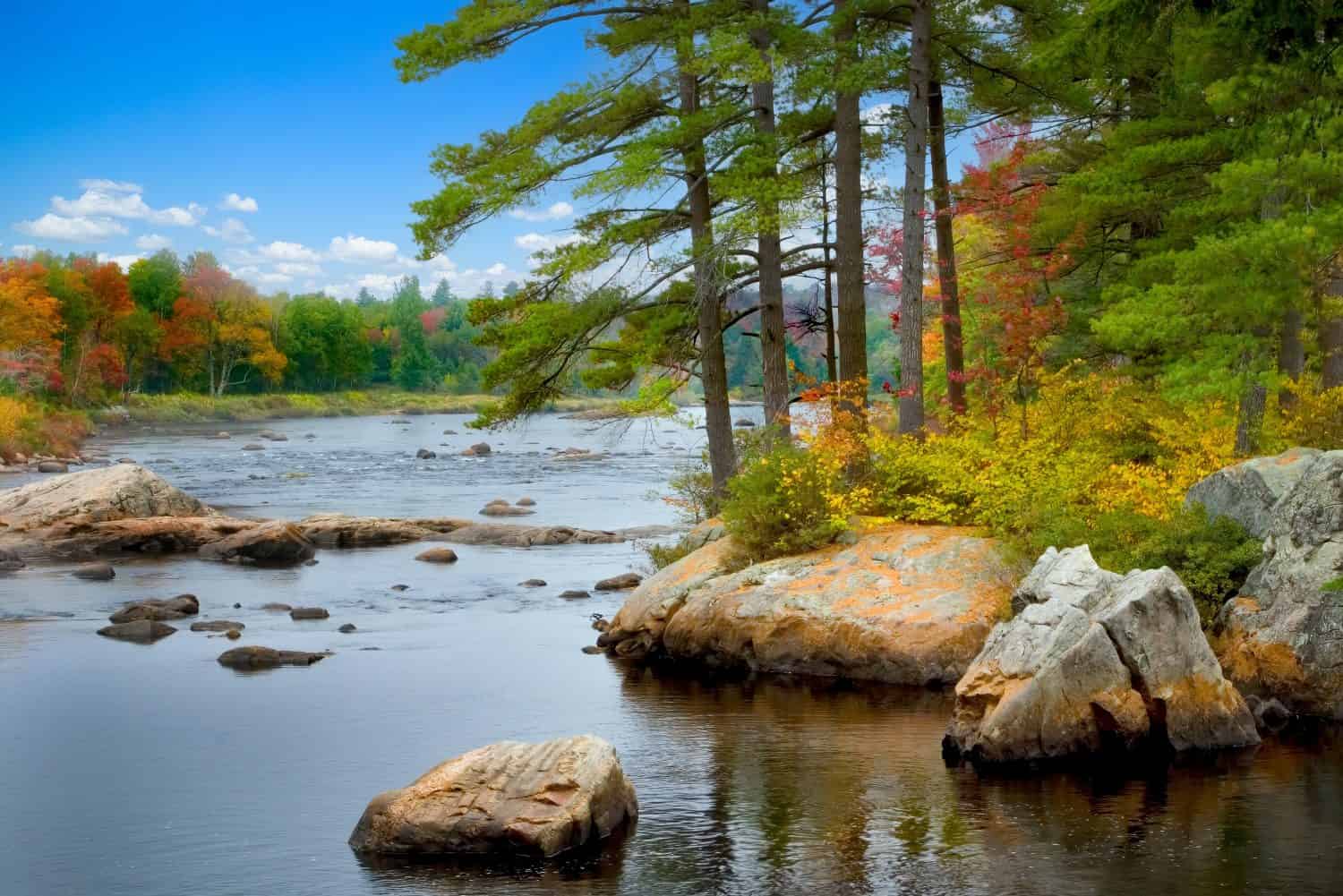
Don’t let this image fool you, Moose River isn’t for the faint of heart.
©Jim Schwabel/Shutterstock.com
If you want a raging river that will push your rafting skills to the test, you need to try out Moose River in New York. It’s a Class IV to Class V river. The trip is 13 miles and will take four hours or so.
Locals call rafting at Moose River “slam-dancing with Mother Nature” due to the challenges. The season is short as there’s only a small window when the water is high enough to let you take some of the drops safely.
16. Lehigh River, Pennsylvania
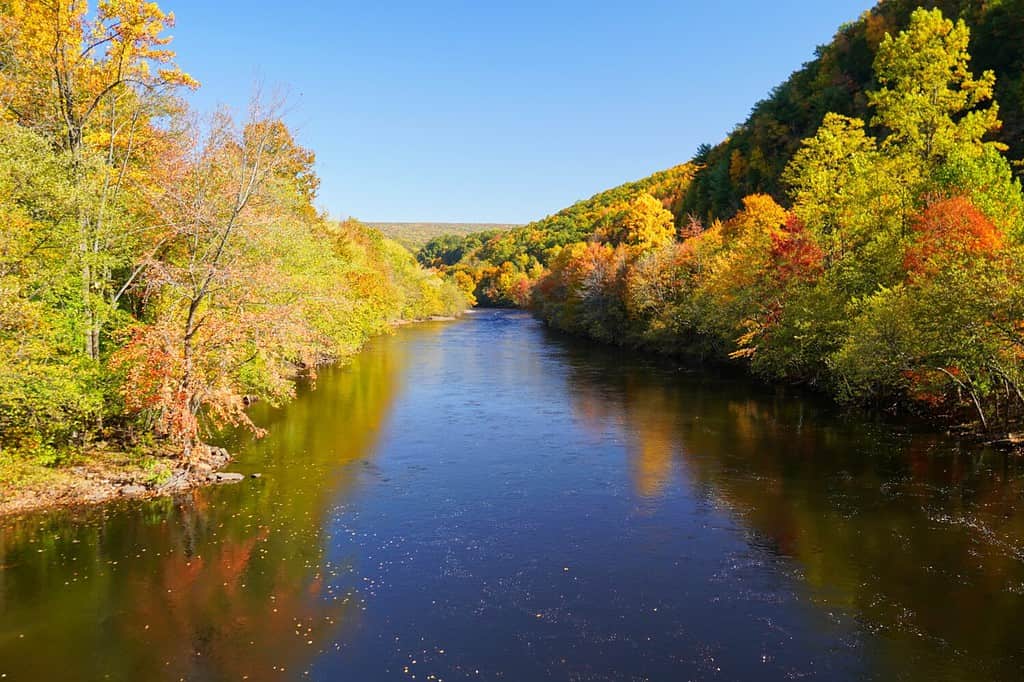
Slower rapids allow for better viewing of the local scenery, like the leaves changing.
©PT Hamilton/Shutterstock.com
For the most part, Leigh River is a Class II or Class III river. However, they do offer trips on dam release days for those who want a little more excitement. While it’s not the most challenging river, it does act as a training course for more difficult areas.
Lower rapids allow for a safe family adventure. The local rafting companies offer standard trips, which last between three and four hours. Some also offer longer trips dubbed “marathons” that can go up to seven or eight hours.
17. Tuolumne River, California

This image of Tuolumne River showcases some of the rapids you could come across on your adventure.
©Robert Bohrer/Shutterstock.com
Tuolumne River in California is another one not for the faint of heart. There are some pretty standard areas for the beginner. However, unless you’re experienced in whitewater rafting and comfortable in the water, you’ll want to avoid the Cherry Creek Section.
This area of Tuolumne River is known as one of the most difficult whitewater rafting adventures in the US. Depending on the time of year, there are somewhere between 12 and 15 Class V rapids. There are also several dozen Class IV rapids to contend with between these bigger ones. It’s only a 9-mile run, but it will leave you exhausted at the end as you combat challenge after challenge.
18. South Fork American, California
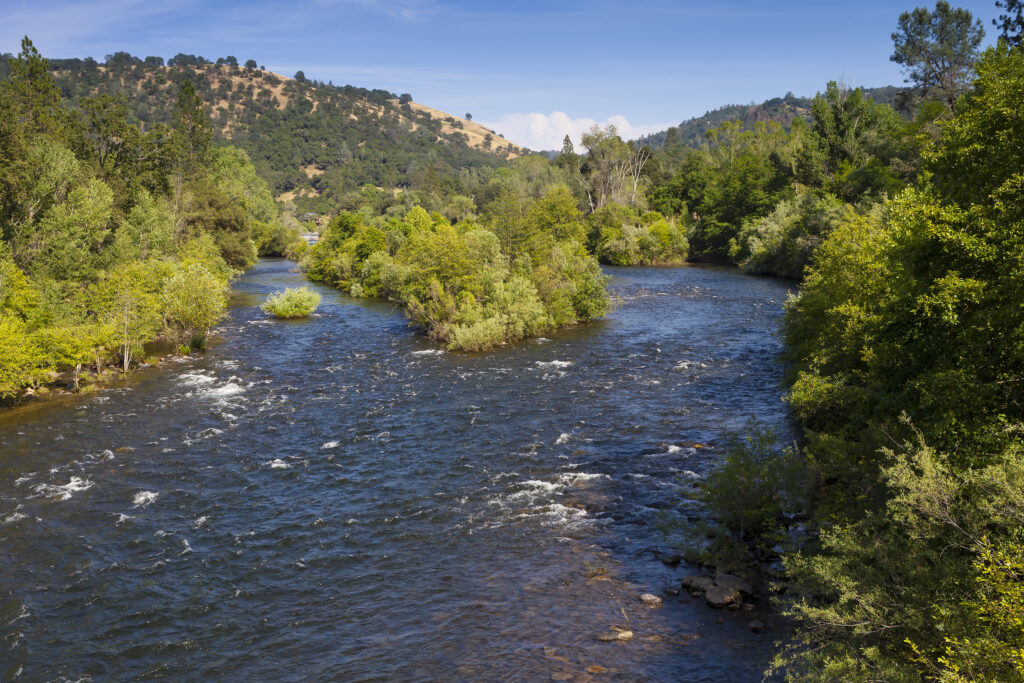
The South Fork American River in California is a fun adventure for any experience level.
©Neil Lockhart/Shutterstock.com
South Fork provides options for any group, skill level, or length. The water and local rafting companies offer rafting rides anywhere between 6 and 21 miles long. There are some options so calm that children as young as age six can join.
Most of the rapids are Class III, but they are easy enough to almost be classified as Class II rapids. It’s a challenge, but a fun challenge that won’t leave you feeling overwhelmed or outside of your depth. Bring your family, coworkers, or friends on a trip they’ll never forget.
19. Delaware River, New Jersey

Upper Delaware River shows the calmness you can expect pretty much anywhere you decide to go rafting in New Jersey’s stretch of the river.
©vm2002/Shutterstock.com
The Delaware River is a simple rafting experience. The rapids are all Class II at most. Because of this, most of the rafting is unguided. You can go with your friends without needing to hire a rafting company to help you out.
Don’t worry if you don’t have the equipment though, there are rafting companies in the area that provide you with all the equipment you need and enough information to allow you to raft without having to worry about anything. Most of the time, the water’s even pretty shallow, so you don’t have to worry about swimming if you fall out of the boat.
20. Gauley River, West Virginia

This dam controls Gauley River’s water levels and is one of the reasons Gauley River is such a great destination.
©Ken Thomas, Public domain – License
Like rafting and celebrations? Gauley River is the place to visit. There’s an annual celebration of whitewater rafting known as Gauleyfest in the area. People in West Virginia tend to be very passionate about the Gauley River and are quick to argue that the river is the best commercially-run rafting adventure in the state, if not further.
There is a lot to love about the river. It’s dam-controlled, which means that there aren’t ever days when the water runs too low or high to raft. It’s also got five Class V rapid in the upper portion and two in the lower portion. In total, there are 23 miles of whitewater rafting along the river.
21. Nenana River, Alaska
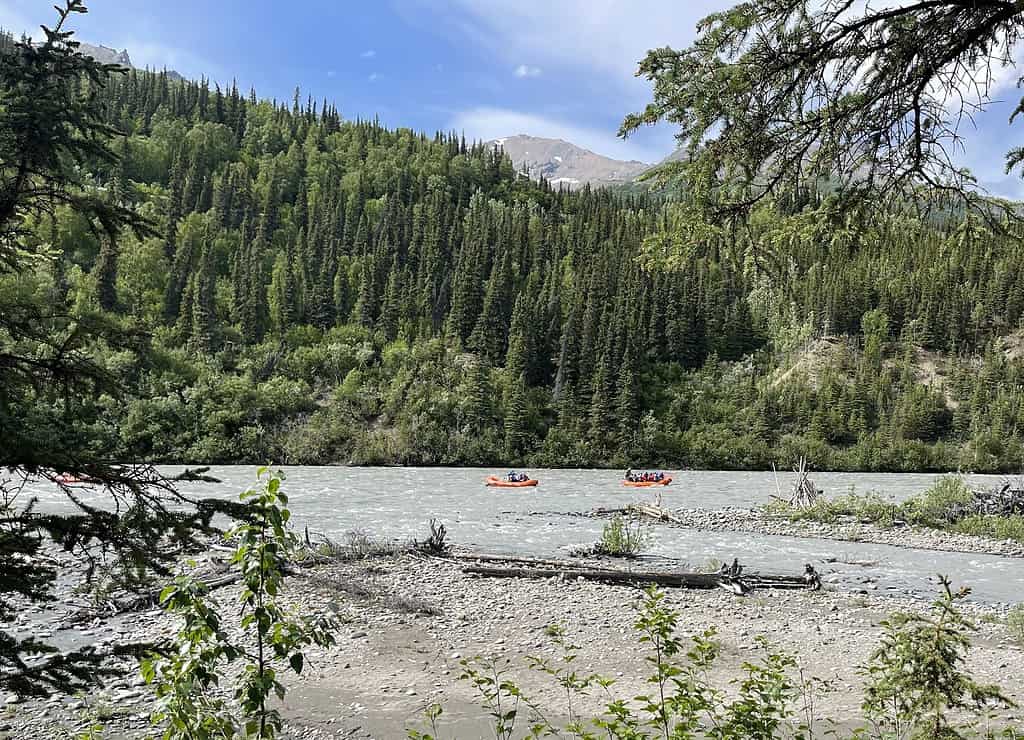
Though it’s mostly a tour, there are still Class II and III rapids in the park.
©Richard N Horne/ CC BY-SA 4.0 – License
Have you considered whitewater rafting in Alaska? If not, you should definitely give it a try. Nenana River runs right through Denali National Park.
Rafting is considered one way to tour the park. Most of the rafting tours in the area are family-owned and have been operating for decades. They have intimate knowledge of the area that they’re more than willing to share with their passengers. You can even choose whether you sit back and relax as you’re guided through the park, or to partake in the work.
22. Youghiogheny River, Pennsylvania
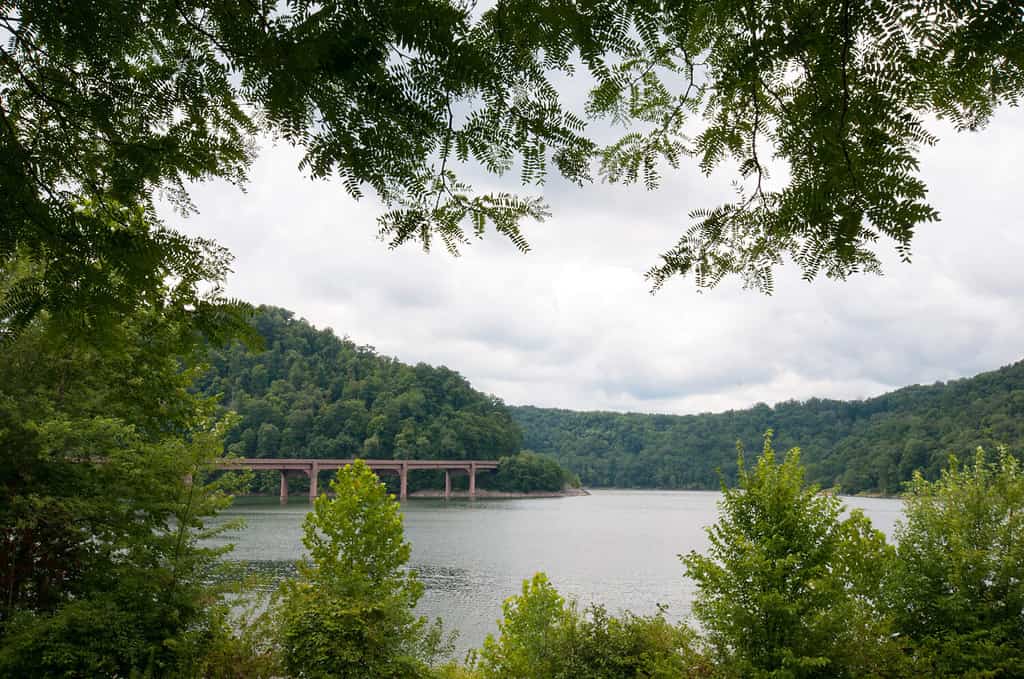
Choose a peaceful area to raft in, or go for more of a challenge.
©Nancy Bauer/Shutterstock.com
Don’t let the name stop you. Rafting this river isn’t something you want to miss if you’re in the area. There are options for rapids ranging anywhere between Class II and Class V, depending on your skill level and whether you want to enjoy the local wildlife, or test your skills against the rapids.
Many locations offer guided escorts for the easier portions of the river. This allows you to practice your own skills and guide your boat while providing you with confidence as experienced guides are running near you at every moment. They’re more than happy to step in if you need a hand or get nervous.
Summary of the Best Whitewater Rafting Destinations in the US
| List Number | River Name | Best State to Visit the River |
|---|---|---|
| 1 | Colorado River | Arizona |
| 2 | Snake River | Wyoming |
| 3 | Ocoee River | Tennessee |
| 4 | Arkansas River | Colorado |
| 5 | Rogue River | Oregon |
| 6 | Pigeon River | Tennessee |
| 7 | Cossatot River | Arkansas |
| 8 | New River Gorge | West Virginia |
| 9 | Nantahala River | North Carolina |
| 10 | Flathead River | Montana |
| 11 | Black Canyon National Water Trail | Nevada |
| 12 | Clear Creek | Colorado |
| 13 | Rio Grande | New Mexico |
| 14 | Nolichucky River | Tennessee |
| 15 | Moose River | New York |
| 16 | Lehigh River | Pennsylvania |
| 17 | Tuolumne River | California |
| 18 | South Fork American | California |
| 19 | Delaware River | New Jersey |
| 20 | Gauley River | West Virginia |
| 21 | Nenana River | Alaska |
| 22 | Youghiogheny River | Pennsylvania |
The photo featured at the top of this post is © Digital Vision./Photodisc via Getty Images
Thank you for reading! Have some feedback for us? Contact the AZ Animals editorial team.






